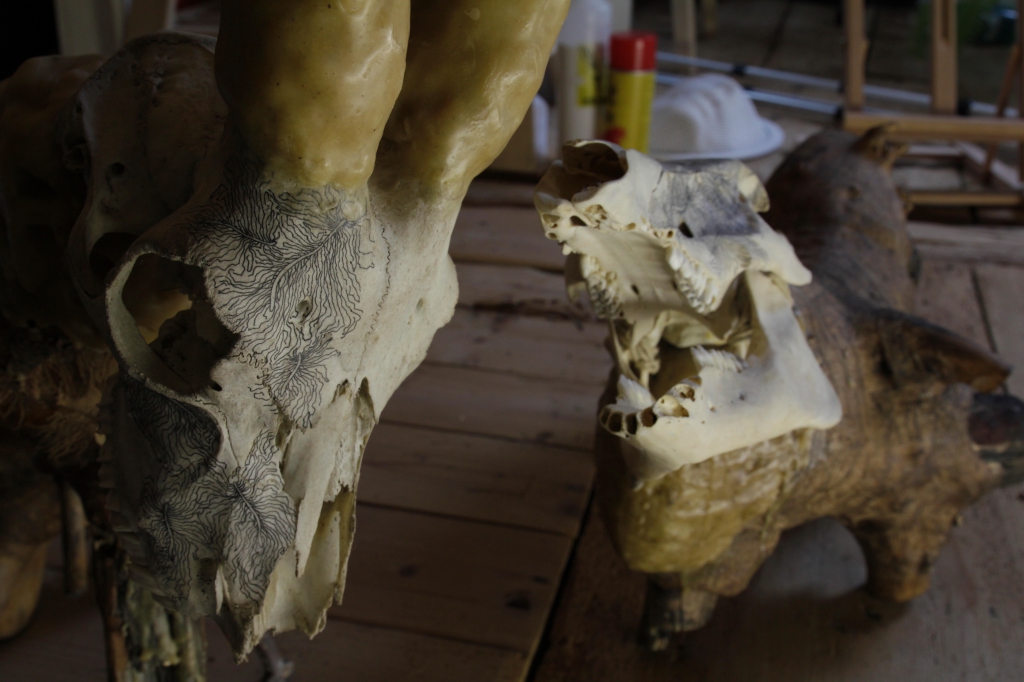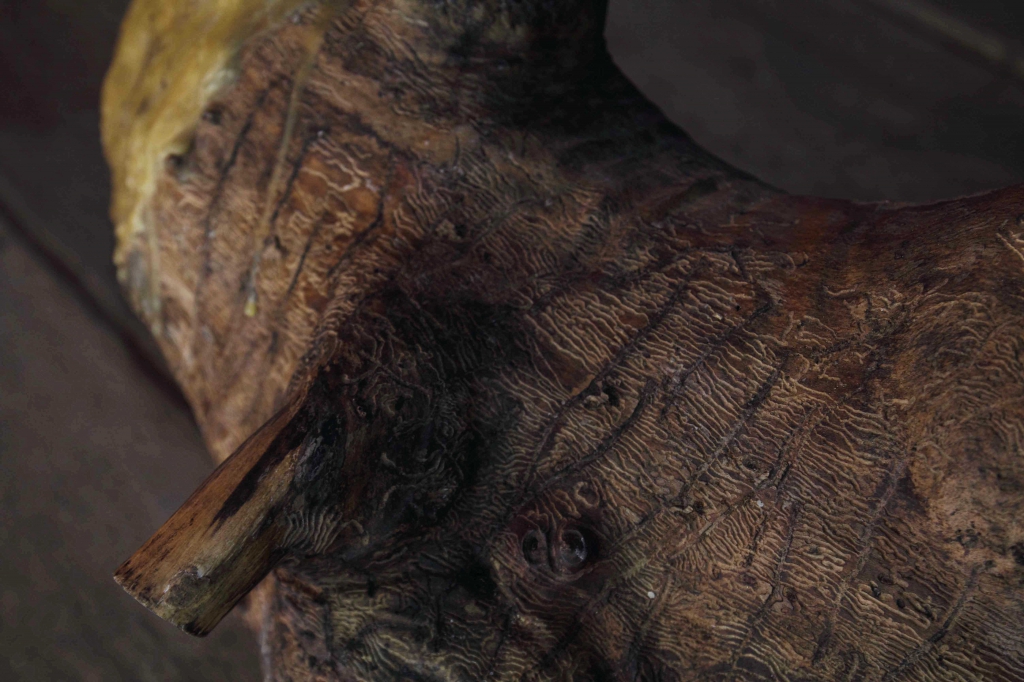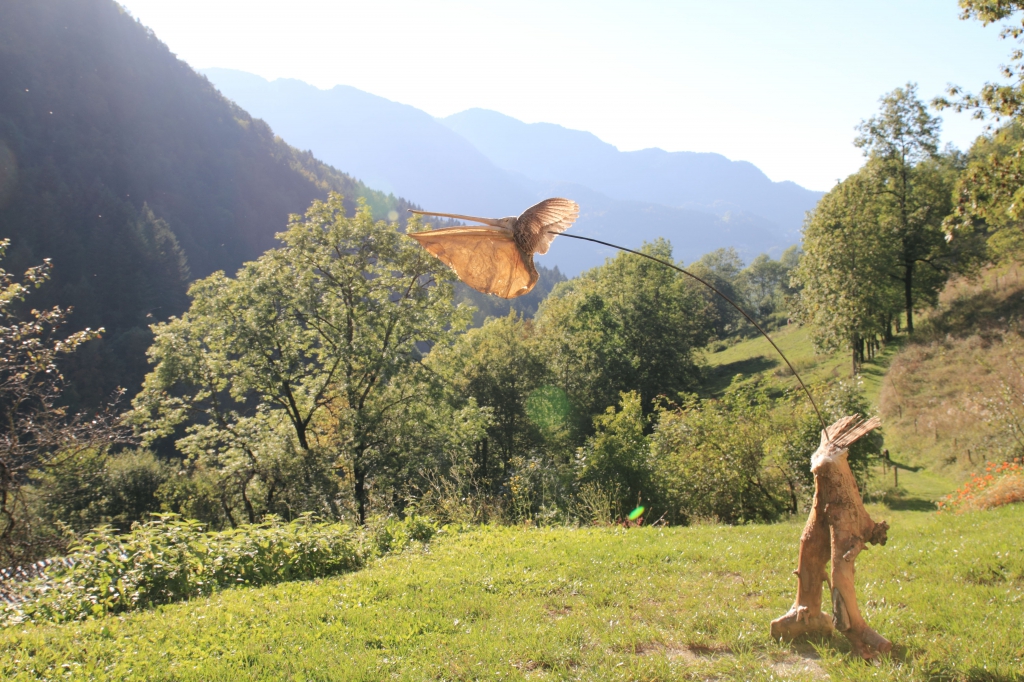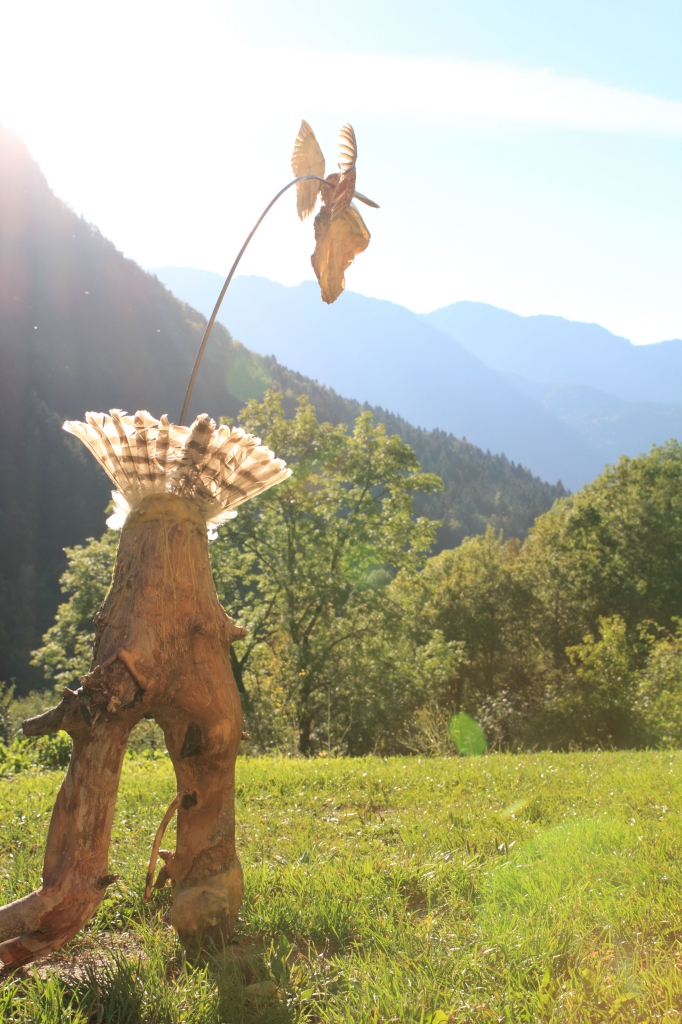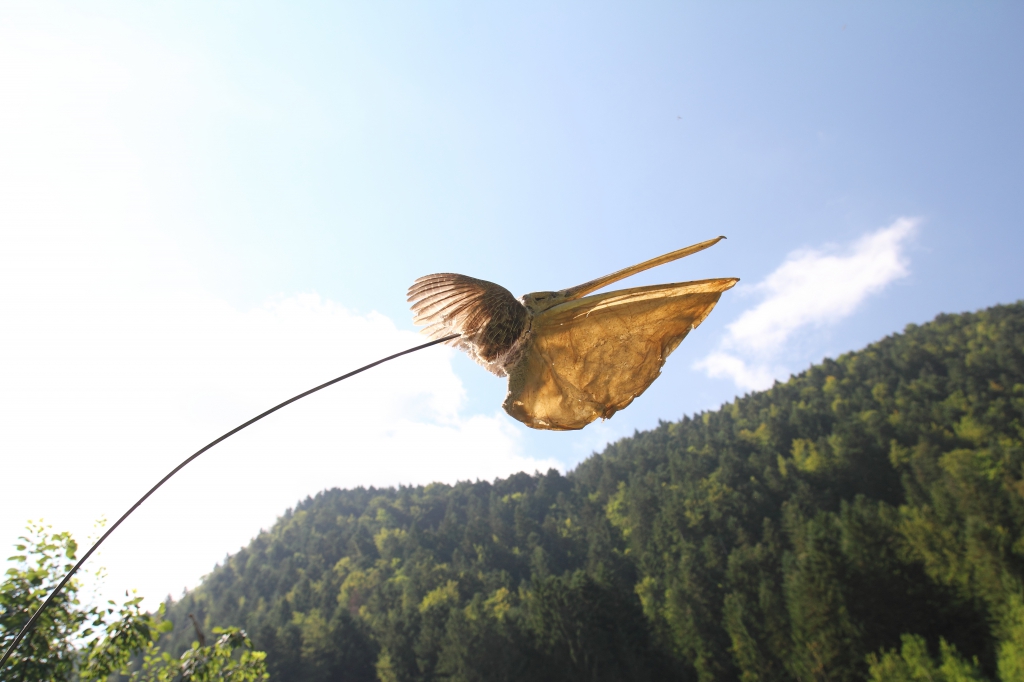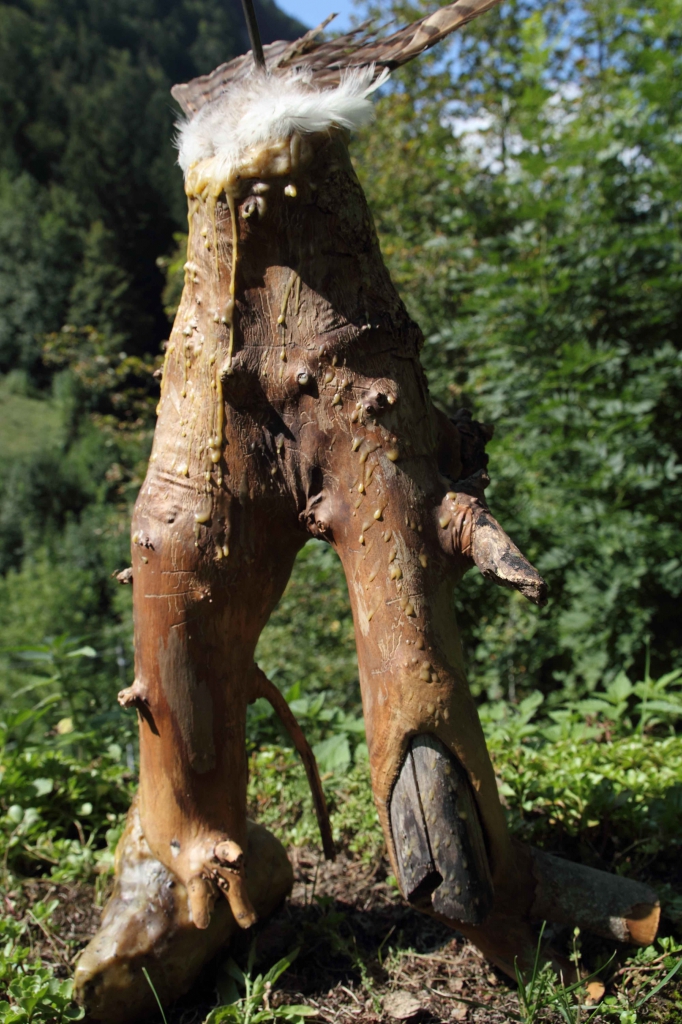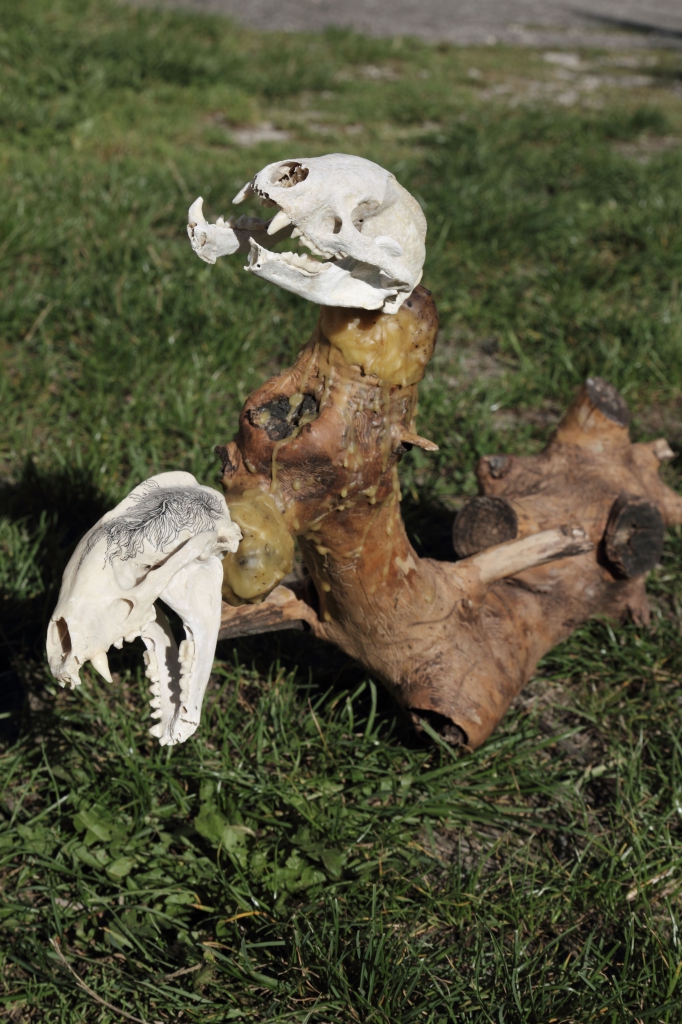These fauns' skulls are the offspring of some periodic walks and harvests in the mountains. Most of the animals in question, whether wild ones or pets, have been man's victim : some dog or fox bones show bullet impacts, while some other animals were found inside trash bags thrown in the wild – cats, badgers, boars.
According to Mircea Eliade (Le chamanisme, 'Shamanism'), hunter people see in animal bones the species' life's endless matrix. As the ultimate source from which any species can thrive again, the bones are carefully gathered and put onto platforms or trees, in accordance to certain traditions.
Those fauns' bodies are pure wood. I start by selecting the animal-looking branches on healthy trees. Choosing the wood wisely, I try to reveal the animalistic, animated aspect, and malleability of the wood matter which wrinkles and bulges furl like muscles under its bark.
Once cut, I leave the wood to the beetles during more than a year. Bark beetles are wood-boring pests that are special for creating especially aesthetical woodcut patterns on trees, which sometimes ressemble a graphein, an unclassified form of proto-writing.
I make those symbolical patterns last by drawing them on the Fauns' bony parts with Indian ink. Echoing some sort of funerary rite, this graphical unction thus tends to give these animal relics to the insects so they can metabolize them through substitution.
Just as a psychopomp, the act becomes here the narrative body of sacramental involvement.
In the old nordic and germanic world, shaman deity Odin – or Woden – typical psychopomp, could use of a charm to make the dead live again through the engraving of runes. (Bertrand Hell, Sang noir, 'Dark blood')
To make a link between the different parts, just like a plant graft – trans-plant – I make use of a rough beeswax moulding.
According to Mircea Eliade (Le chamanisme, 'Shamanism'), hunter people see in animal bones the species' life's endless matrix. As the ultimate source from which any species can thrive again, the bones are carefully gathered and put onto platforms or trees, in accordance to certain traditions.
Those fauns' bodies are pure wood. I start by selecting the animal-looking branches on healthy trees. Choosing the wood wisely, I try to reveal the animalistic, animated aspect, and malleability of the wood matter which wrinkles and bulges furl like muscles under its bark.
Once cut, I leave the wood to the beetles during more than a year. Bark beetles are wood-boring pests that are special for creating especially aesthetical woodcut patterns on trees, which sometimes ressemble a graphein, an unclassified form of proto-writing.
I make those symbolical patterns last by drawing them on the Fauns' bony parts with Indian ink. Echoing some sort of funerary rite, this graphical unction thus tends to give these animal relics to the insects so they can metabolize them through substitution.
Just as a psychopomp, the act becomes here the narrative body of sacramental involvement.
In the old nordic and germanic world, shaman deity Odin – or Woden – typical psychopomp, could use of a charm to make the dead live again through the engraving of runes. (Bertrand Hell, Sang noir, 'Dark blood')
To make a link between the different parts, just like a plant graft – trans-plant – I make use of a rough beeswax moulding.

